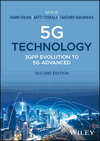Internet of Things Optimization
Summary
Internet of Things (IoT) refers to the interconnection and autonomous exchange of data between devices which are machines or parts of machines, also called sensors and controls. This chapter explains the IoT optimization technologies in 3GPP. The general IoT evolution in 3GPP is explained. LTE-M and narrowband-IoT are also described. Core network optimization is illustrated. The link budget and coverage are presented followed by network capacity. Power consumption minimization is discussed followed by power consumption measurements. There are also alternative technologies for low-cost IoT connectivity, for example, LoRa and Sigfox. They are deployed on unlicensed spectrum and need a dedicated network which is not integrated into mobile networks. The solution benchmarking is also illustrated. 5G enhances IoT connectivity in particular for industrial, vehicular, and other use cases where low latency and ultra-high reliability are important.



